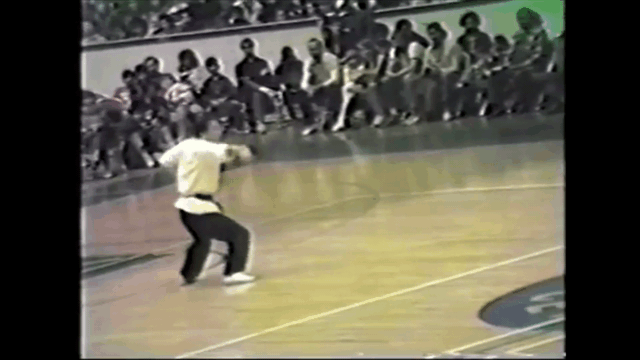I guess this guy is full of it too....Holy **** the method you describe of generating power with zenkustu dachi is absolutely ridiculous.
Same thing when doing the lunge punch in karate. Your weight is moving behind the punch, driving it forward. Sure, you can only start to drive the punch, when the back leg becomes the front... and you can push with the other... or you can break the stance, and bring your back leg closer in, so you can bend the knee. But, the lunge punch from the front stance is to teach pulling with that front foot to initiate the power, and to put your weight behind the punch.
Later, you start in back stance and throw the reverse punch. It does not work, as you run into your self. However, if you transition from back stance to front stance by moving you front leg out and forward... it creates a rotation of the body, forward momentum of the body and a body drop.... all while getting out of the way of the punch. This way you learn to drive the punch with the body weight behind it, supporting it and adding power.
Sure, boxing is a more efficient way to learn to punch. It teaches the same weight transfer, only much quicker. But remember, Karate is not just a striking art. It is also a grappling art. Those long over exaggerated moves (step forward lunge punch) are many times throws. When punching you shorten up the transfer and do it faster. When doing a throw, you need the power all the way through the technique.
Transferring your body weight is a great way to generate power. Using your legs to pull as well as push develops more power as well.


